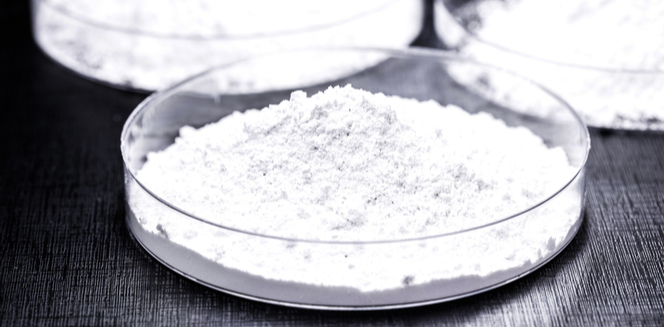Explore the Influence of Nano Silica in the Production of Concrete Materials

17 Jan
2022
Concrete or cement ingredient is widely used in construction industry to build modern structures. Nano silica or silicon dioxide (SiO2) is the second largest material that is used to produce concrete. It is a white fluffy powder that can be obtained from sand, argillaceous rock, and others. It is composed of high purity amorphous silica powder. Nano-silica modified coating is applied on the surface of concrete in order to prevent the degree of carbonization of concrete. Adding nano-SiO2 can accelerate the early hydration of concrete, which is very beneficial for strengthening the early strength of concrete. Thus, SiO2 increases the strength of cement while also increases the setting time of cement.
Nano silica, at the same time, has an array of other advantages such as strong surface adsorption, large surface energy, high chemical purity, good dispersion and so on. Nano SiO2 and silica smoke improves the density of concrete and also makes up for insufficient silica smoke activity. Nano SiO2 improved the shrinkage of concrete which is a common phenomenon in cement based grouting. It can reduce the water permeability of concrete to a great level, thereby can enhance the shrinkage, especially the later shrinkage of lightweight aggregate concrete. The fact that the nano-SiO2 particles decrease the microscopic defects in the concrete and reduce the damage to the polymer molecules caused by ultraviolet rays, it is hugely preferred material in the construction industry.
Moreover, nano-SiO2 can offer excellent impermeability and can enhance the durability of cement ingredient. It has been detected that in case of concrete with more than 5% nano-SiO2, penetration depth of chloride ion in concrete remains lower than the concrete without nano-SiO2. When nano-SiO2 and fly ash are mixed with the concrete together, they split the larger pores of the concrete into smaller ones, thereby improve the permeability resistance of the concrete. Nano silica foster the degree of concrete hydration. It makes the concrete more compact by reducing the pore volume, thus make the concrete more durable.
According to a report published by Allied Market Research, the global Nano silica market size is projected to reach $8.9 billion with a considerable CAGR from 2021 to 2027. The Asia-Pacific region is currently holding the highest market share, owing to rapid urbanization across emerging countries like India and China.
However, the outbreak of the COVID-19 pandemic led to the implementation of lockdown, due to which, the construction industries were forced to shut down their operation. This in turn, reduced the requirement of concrete, thereby decreased the demand for nano-SiO2 in the construction industry to some extent.
Nevertheless, Governments of India & China countries have exhibited “Housing for All” program that is boosting the demand for concrete in construction industry for construction of homes with modern facilities across rural and urban areas. This way, the rise in demand for concrete is surging the demand for nano-SiO2. Also, the demand for nano-SiO2 in coatings applications in the construction industry is fueling the market to a great extent.
Furthermore, the demand for nano-SiO2 is increasing in the rubber industry, owing to its usage as an additive in numerous type of rubbers including natural rubber, nitrile rubber (NBR), styrene butadiene rubber (SBR), ethylene acrylic rubber (AEM), ethylene propylene diene monomer (EPDM), and so on. Here, it is worth stating that the global nano-SiO2 market has a huge scope to gather exponential growth in the upcoming years.

Koyel Ghosh
Author’s Bio- Koyel Ghosh is a blogger with a strong passion and enjoys writing in miscellaneous domains, as she believes it lets her explore a wide variety of niches. She has an innate interest in creativity and enjoys experimenting with different writing styles. A writer who never stops imagining, she has been serving the corporate industry for the last five years.
Use of Nonwoven Fabrics Market as an Effective Means to Lessen Environment Footprint Has Increased across the World
Avenue: Entire Library membership of Allied Market Research Reports at your disposal
- Avenue is an innovative subscription-based online report database.
- Avail an online access to the entire library of syndicated reports on more than 2,000 niche industries and company profiles on more than 12,000 firms across 11 domains.
- A cost-effective model tailored for entrepreneurs, investors, and students & researchers at universities.
- Request customizations, suggest new reports, and avail analyst support as per your requirements.
- Get an access to the library of reports at any time from any device and anywhere.
Related Post
-
How are Submarine Cables Transforming Global Connectivity with Enhanced User Experience?
-
Endoscopy Procedures: Transformations in Techniques and Applications
-
AI-Powered Video Analytics: How the Product Actually Works for enterprises
-
Painting Robots: Transforming Precision Coating and Creative Applications
-
Innovations in Pharmacovigilance Systems Advancing Patient Safety
-
Understanding Edge Security: Keeping Data Safe Near the Source
-
Exploring the Use and Advancements of 3D Laser Scanners in Professional Applications
-
Reinforcing Industrial Controls with Smarter Tools and Training








